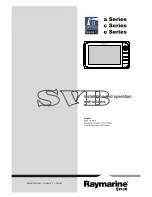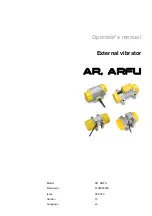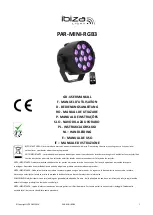
RTC
®
5 PC Interface Board
Rev. 1.9 e
7 Basic Functions for Scan Head and Laser Control
93
innovators for industry
7
Basic Functions for Scan Head and Laser Control
7.1 Marking Points, Lines and
Arcs
7.1.1 Marking with Vector and Arc
Commands
, positioning of the scan system’s axes (and
thus of the laser beam) under RTC
®
5 control is
achieved by calling jump, mark, arc and ellipse
commands. Each of these commands describes one
vector or arc. With the RTC
®
5, hence, only points,
lines and arcs will be marked
(1)
. Even numeric and
alphabetic characters ultimately consist of the
constituent lines, points and arcs that define them
(see
chapter 7.5 "Marking Dates, Times and Serial
).
Vector commands (jump, mark) require as param-
eters the coordinates of the
end
point of the corre-
sponding vector
(2)
. Each vector starts at the
current
output position
, which is usually the end point of the
preceding vector or arc. Arc and ellipse commands
require parameters for the X and Y coordinates of the
arc center and the arc angle(s). Circular arcs start at
the current output position, but elliptical arcs do so
only with appropriate parameters. The initial output
position at start-up (or after a reset of the RTC
®
5) is
the center of the image field, i.e. the point (0|0).
Refer to
chapter 7.3 "Scan Head Control", page 118
for a description of the image field coordinate
system. At runtime, each vector or arc to be traced by
the scan system gets divided by the RTC
®
5 into
microsteps (microvectorization, see
)
(3)
.
Jump commands principally serve to move the scan
system’s axes (while the laser is off) as quickly as
possible to a new starting position
(4)
. In contrast,
marking (i.e. mark, arc and ellipse) commands
perform marking motions while the laser is switched
on (also see following description).
To mark a point, the laser (i.e. the “laser active” laser
control signals) must be switched on for the desired
time period after a jump or mark command (see
chapter 7.1.3 "Marking Points", page 96
). For line and
arc marking, the RTC
®
5 automatically switches the
laser (the “laser active” laser control signals) on at the
beginning of a marking command and later switches
it back off (e.g. at the beginning of a subsequent
jump command). Here, users can specify delays to
optimize the timing of scan head and laser control
signals for their particular applications (see
chapter 7.2 "Delay Settings for Synchronizing Scan
Head and Laser Control", page 99
Adjustment of laser parameters is described in
chapter 7.4 "Laser Control", page 128
.
) a thoroughly-
commented sample code for a basic marking task is
listed.
Jump Commands
A jump command (
(5)
) causes
a (usually) fast movement of the scanner mirrors.
Thereby the focus position (intended for the laser
beam) “jumps“ from the starting point to the end
point of a vector. In general, the laser is switched off
during the jump (if necessary, the “laser active” laser
control signals are therefore automatically switched
off at the beginning of the vector – also see
be defined with the commands
and
If the laser system does not allow fast switching, the
jump speed must be set high enough to prevent a
visible marking effect on the workpiece. Also see the
commands
and
.
(1) Here, wider line widths can be specified via
(2) The coordinates must be specified as digital control values
(without units). To avoid confusion with coordinates in [mm],
SCANLAB uses the expression “coordinate values [in bits]”.
(3) i
DRIVE
®
scan systems let you execute jump and
commands in either the (preconfigured and microvectorized)
vector mode or (after enabling and activation) in jump mode
(see
(4) Outside a list, repositioning can be achieved via
or
(even while the laser control signals are on).
(5) For using abs and rel commands see “AbsCalls”
Additionally, the RTC
®
5 provides timed vector commands (see
) and – if the
3D option is enabled – 3D vector commands (see
).
















































